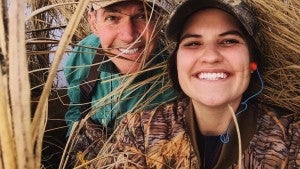Missouri-based ag retailer MFA Incorporated is a regional farm supply and marketing cooperative representing 45,000 farmers and ranchers. It has 130 locations throughout Missouri and in parts of Kansas, Iowa and Arkansas. The co-op’s priority is neither “sales first” nor “conservation first,” but “member success first.”
With this priority in mind, MFA Inc. and three state conservation agencies — Missouri Department of Conservation (MDC), Missouri Natural Resource Conservation Service (NRCS) and Missouri Department of Natural Resources — teamed up to help farmers manage for both profitability and environmental sustainability.
The innovative public-private partnership is featured in a new report prepared for Environmental Defense Fund by Datu Research, Helping Farmers Find Profit and Sustainability: A Case Study of MFA Inc. Shows How Conservation Can Support the Bottom Line. Read More












